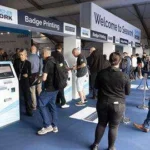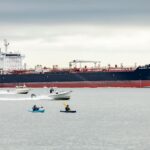Continuous Emissions Monitoring – Why Knowledge is Power for ECA Compliance

With the imminent arrival of Europe and North America’s Emission Control Area (ECA), sulphur emissions limit of 0.1%, and with a global ECA to follow, shipowners will be under significant pressure to prove compliance or else face significant fines they can ill-afford.
The Clean Shipping Coalition (CSC) has suggested to the International Maritime Organisation (IMO) that continuous monitoring technologies that measure emissions directly during the entire journey should be installed on all ships. In its submission to the IMO, CSC said bunker delivery notes (BDNs), which have been “the primary instrument” for ships to verify compliance with sulphur limits, leave too much room for uncertainty.
A key concern for CSC is to ensure that there are no loopholes in efforts to enforce the provisions of MARPOL VI, which sets limits for emissions to air from ships. Several shipping companies, including DFDS, Maersk and Wallenius Wilhelmsen Logistics (WWL) have also raised concerns about inadequate monitoring of ships for compliance with the 0.10% sulphur limit in ECAs from 2015, when the cost of compliance will increase dramatically.
A recent consultation by the UK’s Maritime and Coastguard Agency suggested that it could prove hard for port state control (PSC) authorities to check if a vessel with a scrubber onboard was actually using it. This prompted Meindert Vink, senior policy advisor, Netherlands Shipping Inspectorate to state that he had faith in scrubber technology, especially if combined with tamper-proof continuous monitoring technology. He noted that this would make it straightforward for PSC to simply check the record on paper.
Continuous monitoring of sulphur emissions is one of two methods that can be used to certify scrubbers, according to IMO guidelines.
The most effective method for measuring emissions is in-situ monitoring using a Continuous Emissions Monitoring system (CEMS). Exhaust gases from the combustion of residual and distillate fuels can be analysed so that compliance can be confirmed in port, in ECAs and in international waters. In contrast to extractive sampling where a gas sample needs to be physically extracted from the system for analysis, ‘in-situ’ monitoring provides a continuous, real time measurement of the content of your exhaust gases, with data provided instantaneously on a screen that can be installed in the engine room and on the bridge.
An in-situ continuous monitoring system will immediately flag up any problems. By contrast, a six stack extractive system will monitor any stack for only 12 minutes in any hour, causing potential delay in relaying failure. In-situ systems are also more reliable, as they do not require any filtration or drying of the exhaust gas, and are the only real monitoring option for low maintenance seawater scrubbing operations.
The unique nature of infra-red in-situ systems make them sensitive enough to confirm compliance, even when emission limits are very low. Emissions that are the equivalent of 0.1% sulphur fuel are around 22ppm of SOx in the exhaust gas. Any instrument with a range over 0-100 ppm will not be accurate enough to measure this and an inappropriate choice for operational scrubber monitoring. For example, Parker Kittiwake’s Procal 2000 – an infra-red (IR), duct or stack-mounted system, designed to provide in-stack analysis – has an SO2 monitoring range of 0-100 ppm but can automatically switch ranges to 0-500/1000 ppm for monitoring operations outside of an ECA on high sulphur fuels.
An instrument such as this can measure up to six exhaust gases and a typical system could comprise of up to six stack-mounted analysers to measure gases such as SO2, CO2 and NOx. The analysers are connected to a data acquisition system, which displays, data logs and retransmits the monitored concentrations and SO2 and CO2 ratio – in accordance with IMO regulations – without any manual intervention. This linked with the low maintenance requirements makes it an ideal marine monitoring system.
When it comes to controlling emissions, knowledge is power.















